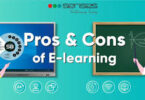The Transformative Role of Technology in Shaping the Future of Education
In today’s rapidly evolving world, technology is no longer a mere tool but a transformative force reshaping industries, including education. The integration of technology into education has revolutionized teaching methods, learning experiences, and access to knowledge. This article explores the pivotal role of technology in the future of education, emphasizing its potential to enhance learning outcomes, bridge educational gaps, and prepare students for the challenges of tomorrow.
The Evolution of Educational Technology
The journey of educational technology began with basic tools such as chalkboards and evolved into digital platforms that connect classrooms globally. The introduction of computers, the internet, and mobile devices has significantly changed how educators deliver content and how students engage with learning materials. Online learning platforms, interactive whiteboards, and virtual classrooms are now integral parts of modern education.
Personalized Learning Through Technology
One of the most profound impacts of technology is its ability to offer personalized learning experiences. Adaptive learning software uses artificial intelligence to assess students’ strengths and weaknesses, tailoring content to meet their specific needs. This approach ensures that learners progress at their own pace, making education more inclusive and effective.
For example, platforms like Khan Academy and Duolingo leverage data analytics to provide customized lessons, quizzes, and feedback. This level of personalization not only enhances comprehension but also boosts student motivation and engagement.
Enhancing Access to Quality Education
Technology has broken down geographical and socio-economic barriers, providing access to quality education for students worldwide. Massive Open Online Courses (MOOCs) offered by institutions like Coursera and edX have democratized learning, allowing anyone with an internet connection to access courses from top universities.
Additionally, e-learning tools have proven invaluable in reaching students in remote or underserved areas. Tablets and solar-powered devices are being used in regions with limited infrastructure, ensuring that no student is left behind in the digital age.
Gamification and Interactive Learning
Gamification is another innovative application of technology in education. By incorporating game elements such as points, badges, and leaderboards into learning activities, educators can make lessons more engaging and enjoyable. Interactive simulations and virtual labs allow students to experiment and learn in a risk-free environment, fostering creativity and critical thinking.
For instance, Minecraft Education Edition enables students to explore historical sites, build complex structures, and learn coding—all while having fun. Such tools not only make learning captivating but also help develop problem-solving and teamwork skills.
Bridging the Gap Between Education and Industry
The integration of technology in education also plays a crucial role in preparing students for the workforce. Virtual internships, online certifications, and industry-specific training programs bridge the gap between academic knowledge and practical skills. Tools like LinkedIn Learning and Google’s Skillshop equip learners with competencies that align with market demands, increasing employability.
Furthermore, technologies like virtual reality (VR) and augmented reality (AR) are being used to simulate real-world scenarios. Medical students can practice surgeries in a virtual operating room, while engineering students can design and test prototypes in a virtual environment. These immersive experiences provide hands-on learning without the constraints of physical resources.
The Role of Artificial Intelligence in Education
Artificial Intelligence (AI) is at the forefront of educational transformation. AI-powered chatbots and virtual tutors provide instant assistance to students, answering questions and clarifying doubts in real time. Predictive analytics helps educators identify at-risk students and implement timely interventions to improve outcomes.
Moreover, AI enables the automation of administrative tasks such as grading and scheduling, allowing teachers to focus more on instruction and student interaction. This streamlining of processes enhances overall efficiency and productivity within educational institutions.
Challenges and Considerations
While technology offers immense benefits, its integration into education is not without challenges. Digital literacy, infrastructure, and affordability remain significant hurdles, particularly in developing regions. Ensuring data privacy and cybersecurity is another critical concern as schools increasingly rely on digital tools.
Educators must also adapt to new teaching paradigms, requiring continuous professional development to effectively leverage technology. Striking a balance between screen time and traditional learning methods is essential to promote holistic development.
The Future of Education: A Blended Approach
The future of education lies in a blended approach that combines the best of traditional and digital learning. Hybrid classrooms, where in-person instruction is complemented by online resources, offer flexibility and scalability. Technologies like 5G and the Internet of Things (IoT) will further enhance connectivity, enabling seamless integration of smart devices into learning environments.
Additionally, the emphasis on lifelong learning will grow as technology continues to evolve. Microlearning modules, virtual reality experiences, and AI-driven assessments will become integral to upskilling and reskilling efforts, ensuring individuals remain competitive in a fast-paced world.
Conclusion
Technology is undeniably a game-changer in the field of education. Its ability to personalize learning, expand access, and bridge the gap between academia and industry underscores its transformative potential. However, realizing this potential requires addressing challenges and fostering collaboration among educators, policymakers, and technology providers.
As we move forward, embracing innovation while preserving the essence of education will be key to preparing future generations for success. By harnessing the power of technology, we can create an inclusive, equitable, and dynamic educational landscape that empowers learners to thrive in an ever-changing world.










Leave a Comment